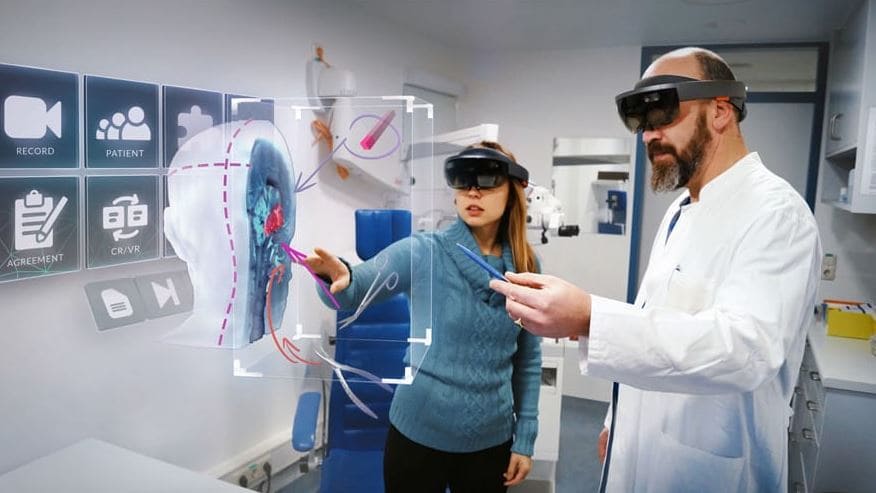Introduction
Virtual reality (VR) involves a set of digital devices that use computer simulations and modeling to enable individuals to interact with three-dimensional (3D) visual and other sensory environments in a mode similar to reality. This technology is being integrated into the educational sector to enhance learning and teaching. In this respect, VR will improve academic performance among students and increase interactivity as they will be able to acquire knowledge better, even if this technology may increase learning costs in the future with possible side effects on human health.
Improved Academic Performance
VR incorporation in modern education can improve academic performance since it aids in boosting concentration among learners. For example, the integration of VR software in education will aid learners in better concentrating in classrooms (Chamekh and Hammami 5). In this case, poor concentration in classrooms makes it challenging for students to understand and gain relevant skills and knowledge necessary for the workplace environment. However, VR technology promotes the creation of visuals and sounds that ensure students remain engaged during the learning process. Moreover, visuals increase information retention and enhance comprehension. Therefore, VR integration in modern education will increase comprehension, engagement, and information retention, leading to better academic performance among learners.

Increased Interactivity With External Environments
VR assimilation in education can significantly impact how learners interact with external environments. For instance, using 3D-VR among medical students allows them to manipulate structures in several ways to apprehend anatomical concepts (Alharbi et al. 2). This technology ensures that medical learners have a better mastery of human anatomy in a way as they work with real human bodies. In this context, VR is linked with interactive, imaginative, and immersive features that allow learners to be placed in different environments depending on their educational fields. Besides, it creates different effects and scenes comparable to realistic environments. VR technology allows learners to acquire knowledge and skills through exploring and performing tasks in digital environments. Therefore, its incorporation in education will ensure that learners can get real experiences through the use of technology, not harming others, which makes the learning process more interactive and exciting.
Increased Education Costs and Possible Side Effects
The mass use of VR makes education more expensive, considering the high expenses of acquiring its hardware and software and countering its impact on health. For instance, the high costs of purchasing and developing VR systems are a significant difficulty to overcome (Kamińska et al. 12). In this case, educational institutions are required to acquire different VR tools, such as a powerful personal computer, headset, standalone gear, and software, to guarantee high-end experiences. These resources are expensive to acquire and install, and the cost burden is transferred to learners’ parents. As a result, education will end up being more costly with the integration of VR. Moreover, reports suggest that VR usage may result in physiological side effects, such as mood changes, isolation, addiction, anxiety, stress, and change in how learners perceive situations (Kamińska et al. 13). These undesirable outcomes due to VR technology use require specific treatments and drugs, which might add more spending after buying its components. Therefore, VR integration in education will make educational administration increase learning fees and influence guardians and parents to spend more money on drugs and treatments as a side effect.
Conclusion
Although VR integration in education will make learning more expensive with some side effects that can be managed, its incorporation will increase learners’ interaction with external environments and improve their performance. VR promotes the creation of simulations of real-world cases that aid learners in being involved in a better learning process. Besides, technology allows the creation of realistic environments, which makes learning more interactive and exciting. However, today, resources associated with using VR effectively are expensive to acquire.
Works Cited
Alharbi, Yasser, et al. “Three-Dimensional Virtual Reality as an Innovative Teaching and Learning Tool for Human Anatomy Courses in Medical Education: A Mixed Methods Study.” Cureus, vol. 12, no. 2, 2020, pp. 1-8, doi: 10.7759%2Fcureus.7085.
Chamekh, Yosr and Mohamed Amin Hammami. “Impact of Virtual Reality on Modern Education.” International Journal of Sciences: Basic and Applied Research, vol. 50, no. 2, 2020, pp. 1-8, core.ac.uk/download/pdf/288306483.pdf.
Kamińska, Dorota, et al. “Virtual Reality and Its Applications in Education: Survey.” Information, vol. 10, no. 10, 2019, pp. 1-20, doi: 10.3390/info10100318.


